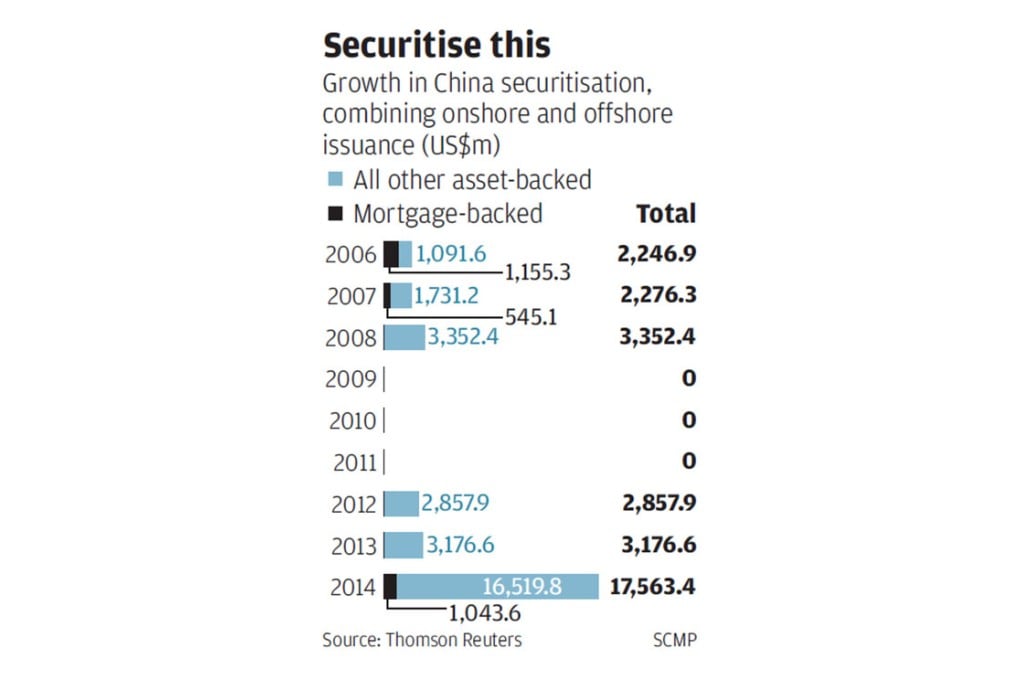China's securitisation push brings mixed blessings
While the instrument gives companies another channel to access funds, investors are put at risk

It is as if the mainland never heard of the global financial crisis. Regulators in that market are embracing securitisation – the type of structured debt that took global banking to the brink of collapse in 2008-09 – with the zeal of the newly initiated.
This is coming from the top.
“Premier Li Keqiang and People’s Bank of China governor Zhou Xiaochuan have said repeatedly they would like to see the development of securitisation,” said Jerome Cheng, a senior vice-president for Moody’s Investors Service’s structured finance group.
The data speaks for itself. There has been more securitisation issued on the mainland in the year to date than in the previous eight years combined, according to Thomson Reuters.
Mainland regulators only opened the domestic market in 2005. The market shut down in 2008 during the global financial crisis and reopened in 2012. But the deal flow in 2014 dwarfs anything done before and it shows this is becoming a serious funding arena in the country.
Analysts said this was part of Beijing’s drive to bring more discipline to bank lending. Collateralised loan obligations were the most common form of securitisation, Standard & Poor’s research showed, making up about 80 per cent.
As the instrument takes off, banks will become more sensitive to the real market price of their loans, and adjust their lending policies and interest charges accordingly.
